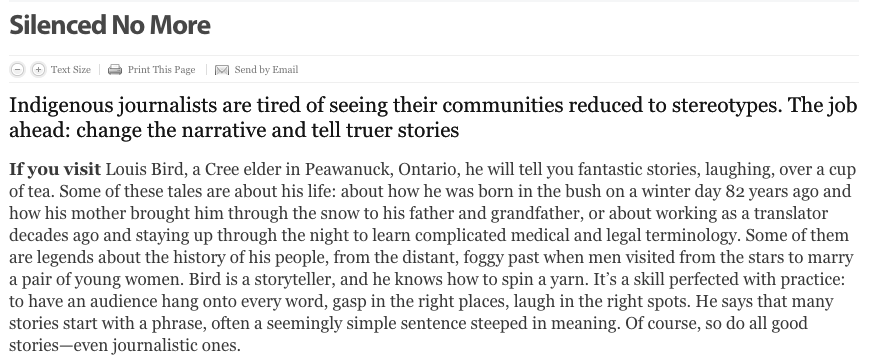By Erin Sylvester
I’m not a good flier. I get motion sick and nervous, and that’s when boarding a nice, steady jet. But to get to the remote, fly-in community of Peawanuck, Ontario, in mid-October to report for my feature in the RRJ, I had to get on two flights—the second in a tiny single-propeller Cessna to take me from Timmins up to the far north of the province.
Luckily, I was fine and I was treated to stunning views of the muskeg and spruce trees. By chance, I also met Louis Bird, an elder and storyteller from Peawanuck, and my visit to his home became the opening scene of the feature.
I headed up north to meet some of the trainees and the trainer from Journalist for Human Rights’s Indigenous Reporters Program—which includes journalism trainees in remote communities, scholarships for Indigenous journalism students and help arranging internships. In between admiring the northern lights, square dancing and keeping up with the Toronto Blue Jays, I interviewed people in the journalism classes and other community members to talk about what sort of stories people in Peawanuck wanted to share.
I also spent a lot of time on the phone, in the less stunning setting of my living room, and spoke with Indigenous journalists across the country about their work and the stories they are telling. My feature explores the work that Indigenous journalists are doing and how newsrooms in Canada can do a better job of including Indigenous voices.
Read “Silenced No More” on the Ryerson Review of Journalism website.
Erin Sylvester is one of the heads of research for the Spring 2016 issue of the Ryerson Review of Journalism. Her work has appeared in the Torontoist and the Calgary Herald.

